Here’s an interesting fact: professional ceramic coatings can protect paint for 2 to 5 years. Repainting a classic car can cost between $2,000 and $10,000. That’s why many choose Ceramic Coating as a first step before repainting.
Ceramic coating offers more than just shine. It creates a bond with your paint, adding hydrophobic properties and UV protection. It also helps older finishes look deeper and clearer. Plus, it reduces washing time and the risk of swirls.
This layer acts as a shield for your car. If your paint is in good condition, you’ll enjoy benefits like easier maintenance and a deeper gloss. If the paint is damaged, repair it first. The cost for ceramic coating starts around $500 and can go over $2,000. Keep reading to find more details in this guide to ceramic coating for classic cars.
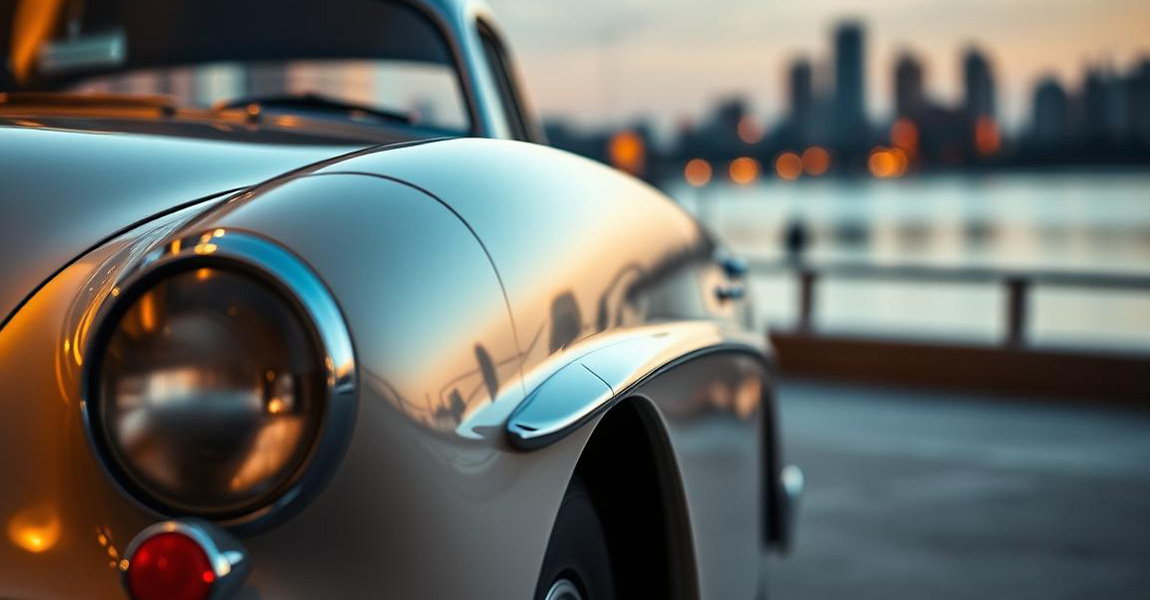
Table of Contents
Key Takeaways – Ceramic Coating for Classic Cars
- Ceramic coatings can last several years and cost far less than a full repaint.
- Thorough paint correction is essential on older cars to remove swirls and oxidation.
- Automotive ceramic coating adds UV resistance, hydrophobic behavior, and contaminant defense.
- Best results come when original or restored paint is in decent condition.
- Coatings reduce wash time and help prevent new marring during maintenance.
- This is not ideal for vehicles with failing paint or those that rarely see the sun or road.
What Ceramic Coating Is and Why It Matters for Vintage Paint
You want your classic car to shine and endure. A professional automotive ceramic coating is a liquid polymer. It bonds to the paint, creating a tight, glossy barrier. This barrier enriches color depth, simplifies cleaning, and offers longer-lasting protection than wax on old finishes.
When applied properly, it shields vintage cars without hiding the beauty of original or restored paint. Following smart care and maintenance tips keeps the finish sharp. You can enjoy driving with less worry.
How ceramic coating bonds to paint and creates a protective layer
The ceramic coating spreads over the clear coat and bonds as it dries. This bond forms a strong, thin layer. It fights UV rays, road dirt, and mild chemical damage. The coating’s slickness helps water and dirt slide right off.
Brands like Gtechniq, CarPro, and Ceramic Pro have reliable chemistry that bonds firmly when correctly cured. This creates a strong layer that keeps the car looking clearer. It also lessens tiny scratches from regular cleaning.
Why older cars need prep: paint correction, oxidation, and swirl removal
Coatings cover everything; they seal in the existing surface. Any oxidation and swirl marks need fixing first. Polishing before coating boosts gloss, which then gets preserved.
Good decontamination, paint correction, and wiping panels ensure a strong bond. These steps are vital for the coating to look its best and work right on older paints.
Protection highlights: UV resistance, hydrophobic behavior, and chemical defense
UV protection keeps colors from fading and surfaces from chalking, essential for vintage cars. Water rolls off quickly, making cleaning easier and safer. It also protects against acidic bird droppings, bug splatter, and road chemicals that can harm finishes.
With proper application, ceramic coating means clearer looks and simpler maintenance. These advantages lead to dependable protection for your vintage vehicle. And it’s all maintained with easy, regular care.
Ceramic Coating for Classic Cars
You want your car’s paint to shine deeply and stay clean with less work. Ceramic Coating for Classic Cars adds a thin but strong layer. This layer fights off UV rays, chemicals, and dirt. Once applied, it not only makes the car glossier but also easier to clean, especially the detailed parts. For vintage car enthusiasts, it’s a great way to keep their rides looking original and beautiful.
Not all car finishes are suitable for ceramic coating. Paint that is peeling, rusty, or bubbling needs to be fixed first. Paint that’s very thin might get damaged if too much of the product is removed. If your classic car doesn’t go out much and is mostly shown at events, sticking with wax could be easier than going for professional ceramic coating.
Extra Bonus Tip: Exclusive Guide to Ceramic Coating for Different Vehicle Types
Ceramic coatings are made to last. The right care can keep a quality coating effective for two to five years. But, spray-on ceramics last a shorter time. If the water doesn’t bead on the surface or the shine dims, it’s time for a new coat. Cleaning your car with gentle products helps make the coating last longer and keeps it looking good through the seasons.
Some car owners prefer getting their cars detailed by professionals to get even and safe results. The price for this can range from $500 to more than $2,000. This depends on the car’s paint condition, size, and the amount of polishing needed. This investment can be worth it if you plan to keep your car for a long time or to show it off. It can mean less maintenance work and a better look.
Data point: The Classic Car Club of America has found that most of its members think coatings help protect their cars’ paint. Tests by Ceramic Pro also show that coatings can significantly reduce fading and damage to the surface. For more details, check out this article on how modern coatings can preserve classic cars.
| Scenario | Best Path | Expected Durability | Why It Fits |
|---|---|---|---|
| Original paint in good shape | Coat after light-to-moderate correction via classic car detailing services | 2–5 years with care | Protects thin heritage finishes while keeping gloss and depth |
| Quality repaint, regular driving | Professional ceramic coating services with maintenance washes | 2–5 years | UV and chemical resistance, faster washing, less abrasion |
| Severely damaged or failing paint | Restore first; consider coating after repair | N/A until restored | Coating cannot fix rust, flaking, or bubbling |
| Garage-kept, rare use show car | Wax or sealant; optional spray ceramics | Weeks to months | Lower cost, easy to rework before events |
Benefits That Preserve Your Ride’s Value and Appearance
You want your classic car to both look good and stay protected. By taking care, you can maintain its original charm and add modern strength. Ceramic coating offers more benefits than regular waxing for both show cars and daily drivers. These tips help keep your car’s value high without hiding its past.
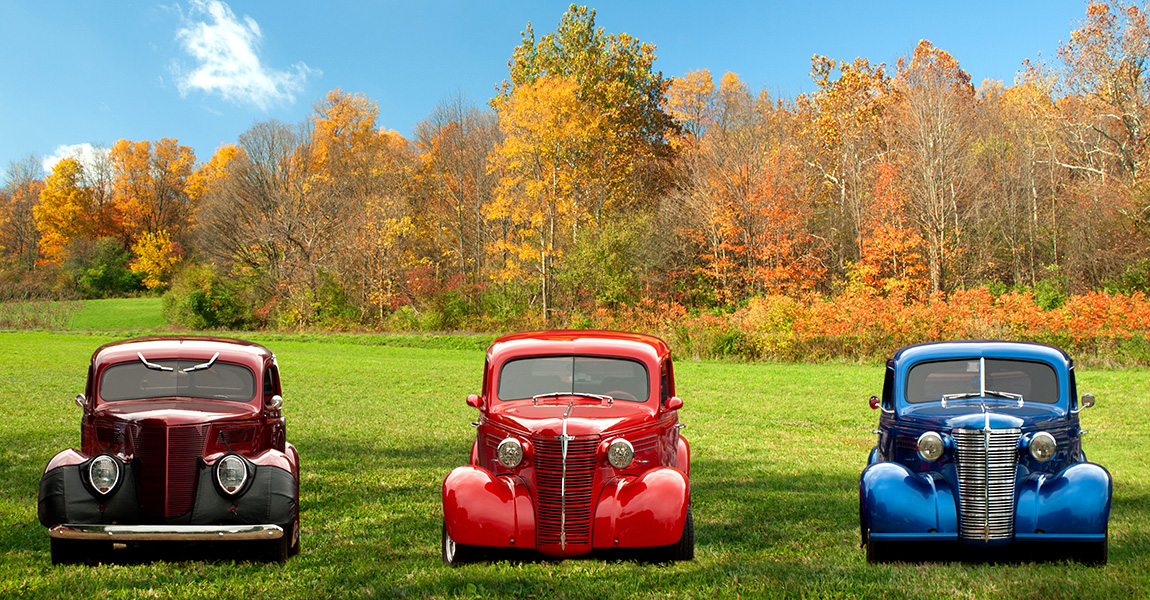
UV protection and oxidation prevention for aging finishes
Sunlight can damage older paints and finishes, making them look faded and brittle. A ceramic coating blocks harmful UV rays and slows down oxidation. This keeps your car’s shine for longer, whether it’s stored in a garage or driven regularly. You’ll see less fading and fewer dull spots overall.
While it doesn’t replace the need for paint correction, coating helps maintain the shine after polishing. For many, choosing ceramic coating means less frequent detailing and easier care.
Hydrophobic ease: faster washing, fewer water spots, less abrasion
With hydrophobics, water quickly runs off the surface. This means washing is quicker, drying needs fewer wipes, and the paint is less likely to get scratched. You’ll wash more and rub less, preventing dirt from scratching your car.
It also makes it easier to clean your car, allowing you to use gentle soaps and tools. This is especially helpful for cars that are driven on weekends or on long trips.
Enhanced gloss that amplifies well-corrected original or restored paint
After fixing up the paint, applying a coating can enhance its look even more. It brings out the shine, depth, and color, making your car stand out. It keeps your car looking great, without needing frequent wax reapplications.
Car owners find that this protection helps their car maintain a fresh, detailed look longer between washes.
Contaminant resistance at shows and on the road: bird droppings, bug splatter, and grime
Bird poop, bug guts, and road grime can damage the paint if not cleaned quickly. Ceramic coating makes it easier to clean these off without hard scrubbing. It keeps the car’s surface smooth, preventing dirt from gathering in crevices.
Combining this protection with good care tips—like parking in the shade, using soft cloths, and rinsing regularly—makes ceramic coating a great way to keep your classic car looking its best.
Application, Pro vs. DIY, and Cost Considerations
Protecting your car means picking the right plan. It should fit how often you drive and where you keep your car. Finding the balance is key: good prep, choosing the best products, and determining how much risk you’re okay with.
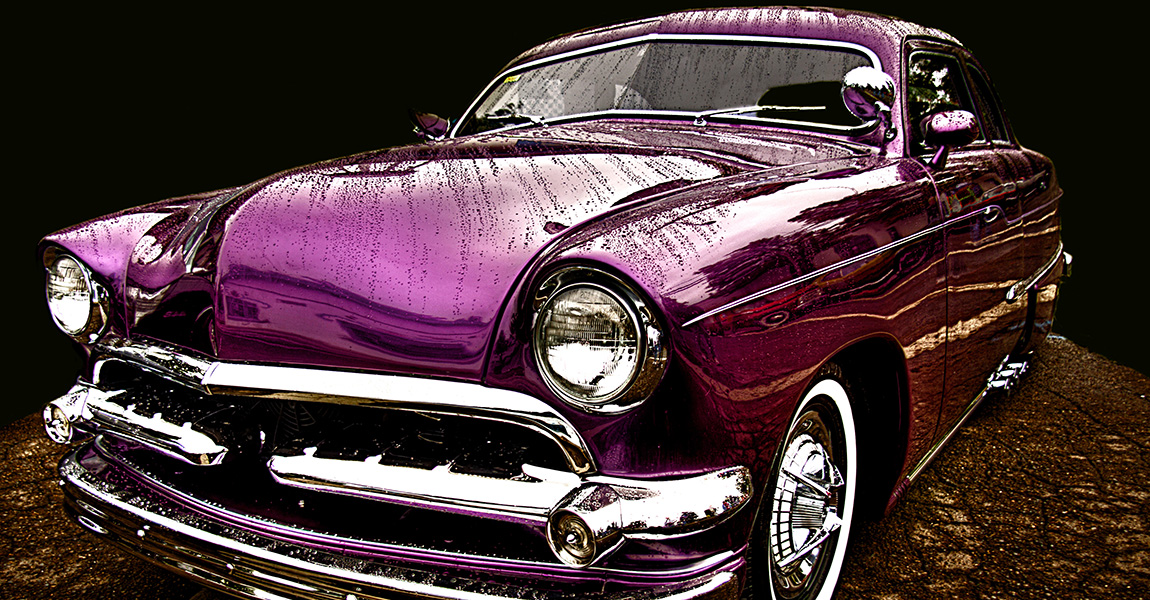
Classic car detailing services: correction-first approach to maximize results
Detailing classic cars starts with fixing paint issues. You have to get rid of scratches and dull spots first. If not, any coating will lock them in, making them stand out under the shine.
Experts have a way they do this: they wash, remove iron particles and clay, and polish, sometimes in many steps. This method takes care of fragile paint and gets it ready for Ceramic Coating for Classic Cars.
Ceramic coating application process and curing for durable protection
The way you apply ceramic coating makes it last. You lay it down in thin, overlapping layers carefully. Always smooth out any uneven spots before the coating sets.
Keep the coated areas dry for one to two days. It takes about a week to fully harden. Washing gently with the right shampoo and using booster products helps keep the coating effective for two to five years.
Professional ceramic coating services vs. DIY kits for vintage vehicles
Going pro gives you better formulas and a perfect working space. This means less risk of mistakes that could be hard to fix.
DIY might save some cash if you’re good with paint and have a clean space. But be careful with delicate paint – sometimes, a wax is safer until you can bulk up the paint.
Cost ranges and variables: paint condition, steps required, vehicle size, product type
Costs depend on many factors: your car’s size and shape, the condition of the paint, the amount of work the paint needs, and the coating brand. You might spend $500 to $2,000 or more on Ceramic Coating for Classic Cars. More detailed or damaged cars cost extra.
DIY means spending on tools, lights, and upkeep products instead of labor. But the cost of gentle soaps and coating-friendly products will add up over time, just like the initial coating job.
Conclusion: Ceramic Coating for Classic Cars
Ceramic Coating for Classic Cars helps maintain your car’s look. If your car’s paint looks good—whether it’s original or has been restored well—a good ceramic coating will add shine. It also makes cleaning easier and protects against the sun and road dirt. It’s a great choice for owners who want to keep their cars looking good without much work, especially if they prefer maintaining the original look over frequent polishing.
But keep your expectations realistic. Coatings can resist scratches but aren’t immune to them, and they can’t stop damage from rocks—that’s what paint protection film is for. If your car’s finish isn’t in good condition, consider repainting before applying a ceramic coating. For cars that don’t leave the garage much or have delicate paint, a high-quality wax or sealant might be better. They’re easier to fix if there’s an issue. Remember, warranty terms for coatings can be strict, so always read them carefully.
To keep a coating lasting longer, you need the right care. A well-applied coating can protect your car for 2 to 5 years if you wash it carefully, park in the shade, and use gentle cleaning products. Signs like less water beading or loss of shine mean it’s time for a refresh. For those who don’t want to do it themselves, professional ceramic coating services are available. They can help ensure your classic car stays protected while simplifying your maintenance routine.
In the end, deciding on ceramic coating is about weighing the costs and benefits. The price can range from $500 to over $2,000, depending on the preparations and products used. Consider what you want in terms of shine, protection, and saving time. When chosen carefully, Ceramic Coating for Classic Cars can offer lasting beauty, strong protection, and an easier way to keep your car looking its best.
FAQ
What is ceramic coating, and how does it bond to classic car paint?
Ceramic coating is a liquid polymer that bonds with your car’s paint, creating a strong, see-through layer. By applying thin layers and letting them fully cure, it forms a shiny, water-repellent surface. This surface fights off UV rays, chemicals, and dirt. Unlike wax, it lasts two to five years if you take care of it right.
Why do older cars need paint correction before ceramic coating?
Before coating, you need to fix any paint flaws. If you don’t, things like scratches and swirls will be sealed in. Fixing these issues first ensures the paint looks clear and deep, allowing the coating to protect it well.
What protection does a ceramic coating provide for vintage paint?
It offers UV protection to reduce fading, makes your car easier to clean, and fights off chemicals. This coating isn’t scratch-proof, but it does make your car more resistant to scratches.
Is ceramic coating a good idea for classic cars?
Yes, if your car’s paint is in good condition. It keeps the paint protected, makes upkeep easier, and increases shine. But it’s not suited for paint that’s peeling or rusty. Fix these problems first, then apply the coating.
How does ceramic coating help prevent UV damage and oxidation on aging finishes?
This coating blocks UV rays that can fade and oxidize the paint. This protection is vital for older paints, keeping their color and shine over time.
How does the hydrophobic effect make washing easier on classics?
Because water and dirt slip off easily, cleaning is quicker. This means less scrubbing, which is good for old paint. Plus, drying is faster with less risk of adding new swirl marks.
Will ceramic coating increase gloss on original or restored paint?
Yes, after polishing, it boosts the shine and keeps it that way longer. It seals in the gloss and adds smoothness.
How well does a coating resist contaminants like bird droppings and bug splatter?
It does a great job. The slick surface stops these contaminants from damaging the paint, buying you time to clean them off.
What do classic car detailing services do before applying a coating?
They thoroughly clean the paint, remove any iron particles, and polish out imperfections. After that, they clean it again to ensure it’s ready for the coating. This makes sure the coating looks its best and sticks well.
What is the ceramic coating application process and curing time?
Specialists apply the coating carefully, even out any uneven spots, and let each layer dry. The car needs to stay dry and out of strong light for one to two days. Full hardening takes a week for optimal strength and durability.
Should you choose professional ceramic coating services or a DIY kit for a vintage vehicle?
Professionals are better for delicate jobs because they have the right setup and skills. While you can find kits to do it yourself, these require careful work to avoid mistakes that might need professional fixing.
How much does ceramic coating cost for classic cars, and what affects the price?
Prices range from $500 to over $2,000. This varies based on how much correction your car’s paint needs, its size, and what products the detailer uses. Bigger cars and more prep work mean higher costs. High-quality coatings and guarantees might increase the price.
How long does an automotive ceramic coating last on a classic, and what maintenance is required?
A good coating can last 2-5 years. Wash it by hand with a gentle shampoo and dry it with a soft towel. Using upkeep sprays helps keep it effective. Storing your car in a shaded spot or indoors also prolongs its life.
Are ceramic coatings scratch-proof or a substitute for paint protection film?
Coatings reduce scratch risks but aren’t a shield against all damage. For the best protection against impacts, use film on exposed areas and coating on the rest of the car.
Are there cases where ceramic coating isn’t the right choice for a vintage car?
Yes. If the paint is in bad shape or very delicate, applying a coating might be tricky. Cars that stay in garages might benefit from wax or a sealant, which are less costly and simpler to reapply.
How do you know a coating needs refreshing on your classic?
Look out for less water beading, a drop in shine, and dirt sticking more easily. A good cleaning and a booster spray can restore its performance. If these fixes don’t last, it’s time for a new coat.
What’s the difference between spray-on ceramics, hybrid products, and full coatings?
Spray ceramics work for about 6-12 months, and hybrids for 2-6 months. Professional coatings, when properly applied and maintained, protect your vintage car for 2-5 years, offering the longest-lasting protection.
Do ceramic coating warranties require specific maintenance?
Often, they do. Warranties might ask for regular washing with mild soap and checks by professionals. Be careful with promises of “lifetime” coverage, and keep your service documents to stay protected.
What are practical classic car maintenance tips after coating?
Wash it every two weeks with a gentle shampoo and use a soft towel for drying. Steer clear of harsh polishes to avoid damaging the coating. Keep your car indoors, cover it gently, and apply boost sprays occasionally.
How does ceramic coating fit into a preservation plan for collectible cars?
Start by making the paint perfect, then lock it in with coating. Maintain it with careful washes. This approach reduces damage from the elements, keeps the car’s originality, and helps its value. It’s a smart move for those with classic cars.





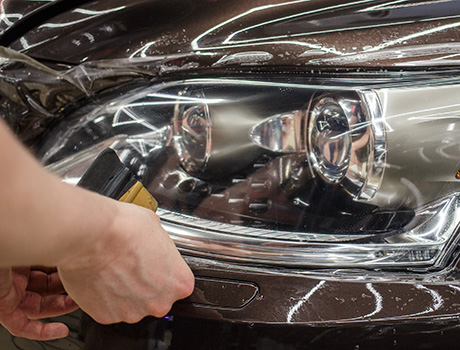
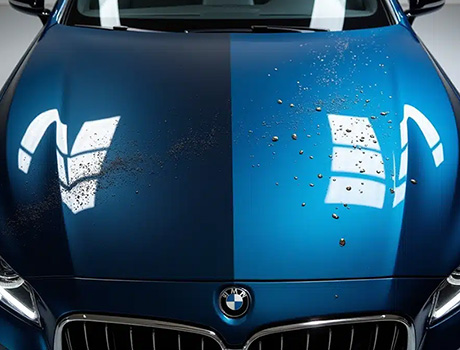
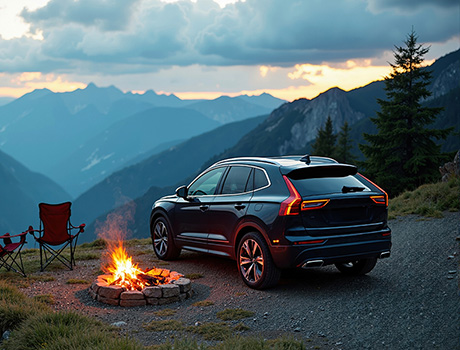
WHAT OUR CLIENTS ARE SAYING